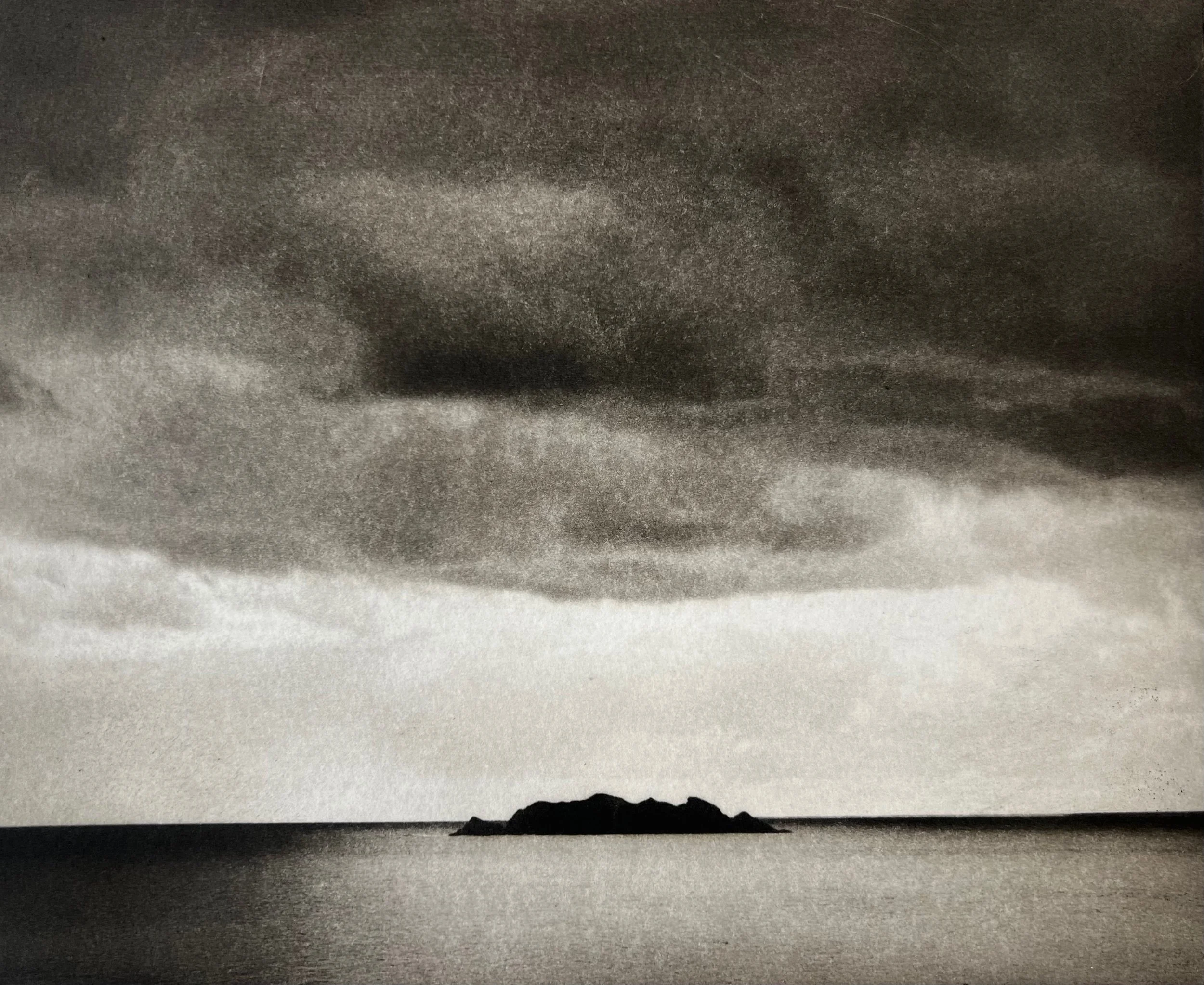Digital Sharpness vs. Handmade Softness
How the Medium’s Materiality Sets It Apart in a World of Perfect Pixels
How the Medium’s Materiality Sets It Apart in a World of Perfect Pixels
In an era of retina displays, machine learning upscaling, and 4K everything, photogravure steps quietly in the opposite direction. It doesn’t try to keep up. It doesn’t compete. Instead, it invites us into a different sensory world—one defined not by resolution, but by resonance.
Photogravure's materiality—the plate, the ink, the paper, the press—introduces a softness that is not a flaw but a feature. This softness isn't blur. It’s a quality of presence. Tactile, tonal, and subtly uneven in a way that feels distinctly human.
Digital Sharpness as Default
Digital photography privileges clarity. In many ways, it’s designed to remove the interference of medium. Noise reduction, lens correction, sharpening algorithms—all engineered to deliver an image that feels frictionless, untouched by process. We’re trained to read this precision as professionalism.
But when every image is equally sharp, what does sharpness even mean anymore?
Softness with Intention
Photogravure introduces nuance through its very construction. The etched plate doesn’t simply reproduce an image—it interprets it. The handmade softness that results isn't nostalgic or lo-fi. It’s interpretive. A form of translation.
The ink soaks differently into handmade paper than machine-cut fiber. The press leaves a gentle emboss. The grain of the aquatint subtly shifts across tonal regions. Every layer—physical and perceptual—adds atmosphere, not noise.
Material Speaks
In photogravure, the process is not invisible. It speaks. It reminds the viewer: this image has been touched. Not just by light and lens, but by hands. The softness isn’t a lack of fidelity—it’s an embodiment of it.
When people stand in front of a photogravure print, they lean in. There’s nothing flat-screen about it. The softness draws them closer. It invites not just looking, but lingering.
Why It Matters Now
As images become more ubiquitous, more optimized, more same, the subtlety of the handmade matters more. Photogravure isn’t trying to replicate the digital—it’s offering a counterpoint. A visual and tactile exhale. A chance to feel something beyond pixels.
Softness, in this context, is not weakness. It’s humanity.
An Introduction to Photogravure
Why photogravure invites interpretation instead of asserting truth.
In a time when images are everywhere—fast, loud, and endlessly repeatable—what does it mean to make one that quietly invites attention?
Photogravure doesn’t demand to be seen. It doesn’t shout its meaning. Instead, it leans in, hushed and deliberate, offering itself as an echo rather than a declaration. The viewer is invited not to decode or react, but to dwell - to sit with the image and allow it to unfold in time.
This is the beginning of a series about photogravure. Not as a process guide or a historical timeline, but as a conversation about what it feels like to make and experience these prints. About what this medium allows, and why that matters now more than ever.
Photogravure occupies a unique space. Between photography and printmaking. It’s photography, yes, but softened and filtered through a tactile, handmade process. It doesn’t live in the same world as high-gloss digital photos or the cold, surgical sharpness of inkjet prints.
It’s something slower. Something quieter.
The process itself encourages interpretation. The image, once precise, begins to dissolve: softened by the grain of an aquatint screen, warmed by the ink, held in the gentle pressure of the press. By the time a photogravure print emerges, it’s no longer a document—it’s an invitation. Less about what happened, more about how it felt.
In that sense, photogravure resists the expectations of photography as evidence. It favours the poetic over the factual. The suggestive over the explicit. The hand, the gesture, the imperfection—these become integral, not incidental.
This first post opens the door. Over the next several entries, we’ll explore how photogravure blurs boundaries: between photograph and print, craft and concept, past and present. We’ll look at how its ambiguity isn’t a flaw—but the point.
If you’ve ever stood before a print and felt something you couldn’t quite name—something soft, slow, and deep—you’ve already felt what photogravure can do.
Let’s explore it together.
Coming next: Digital Sharpness vs. Handmade Softness — how the medium’s materiality sets it apart in a world of perfect pixels

